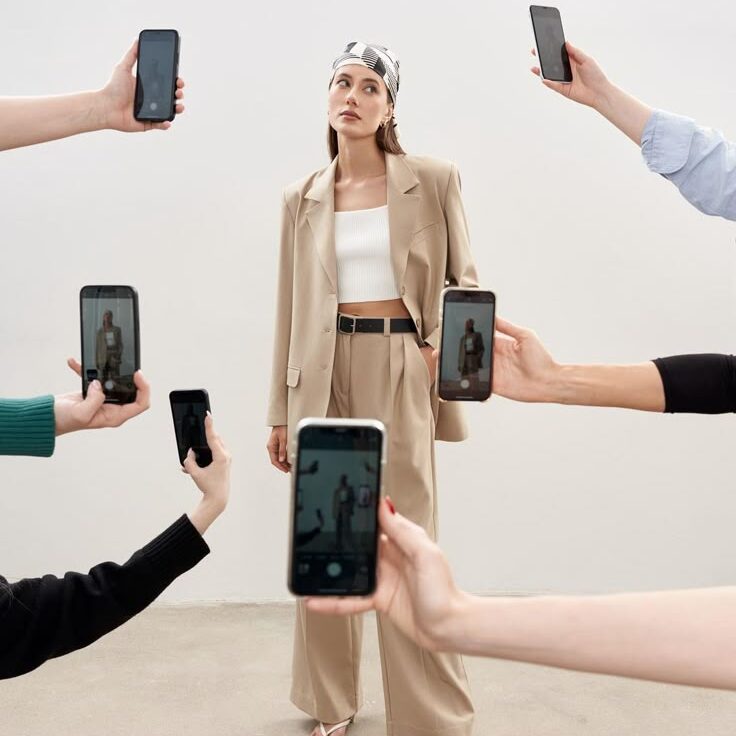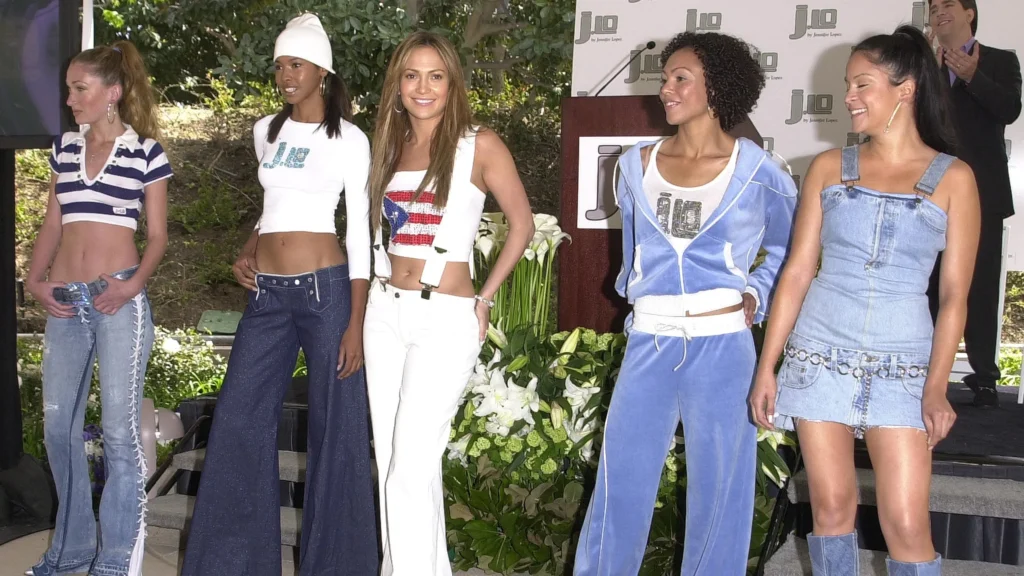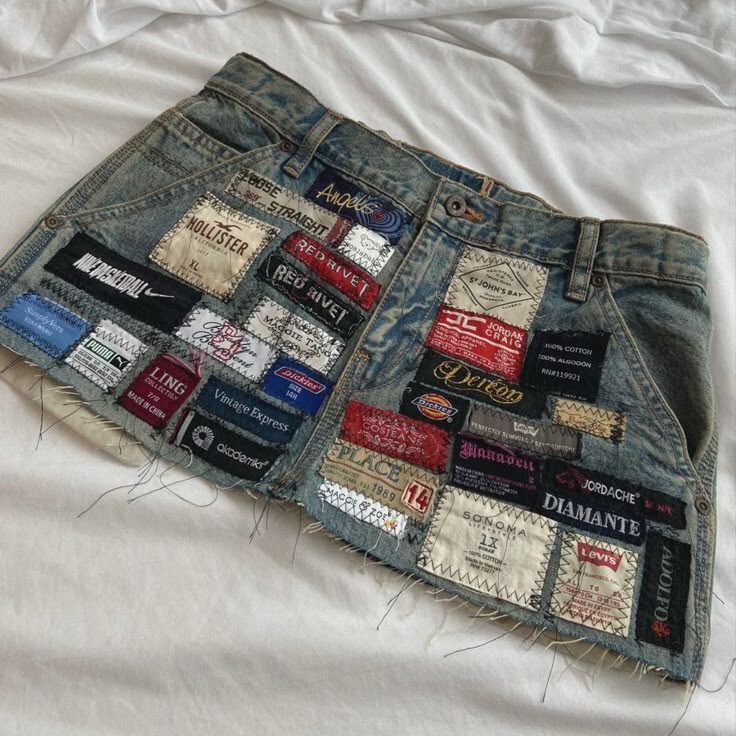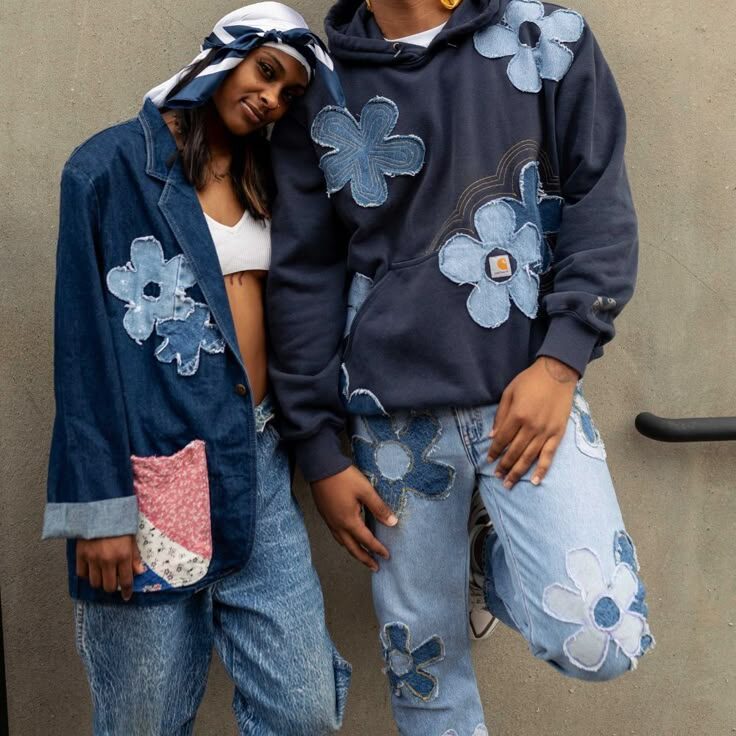The Internet Didn’t Kill Y2K, It Brought It Back
In the early 2000s, butterfly clips, metallic crop tops, and low-rise jeans ruled the streets and red carpets alike. Fast forward to 2025, and these iconic trends are experiencing a full blown Y2K fashion revival but this time, the runway is digital. Platforms like TikTok, Pinterest, and Instagram have breathed new life into these nostalgic styles.
In this blog, we’ll explore how social media platforms fueled the Y2K fashion comeback, which creators led the charge, and how brands are capitalizing on the trend. Whether you’re a vintage lover or a digital marketer, this revival says a lot about how fashion and tech intersect in today’s world.

TikTok: The center of the Y2K Boom
TikTok’s algorithm thrives on nostalgia. Its short-form video format makes it the perfect place for trends to re-emerge and evolve. Hashtags like #Y2Kfashion and #2000sAesthetic have amassed billions of views, offering micro-trend niches like coquette, preppy, or clean girl
The real power lies in how easily TikTok turns viewers into participants. A user sees a haul video with baby tees, pleated skirts, and platform sneakers—and within minutes, they’re replicating the look or ordering the pieces.

CTA #1: Want to start your own Y2K lookbook? Check out our guide on Must-Have Y2K Fashion Staples.
Pinterest: Mood Boards That Spark Microtrends
Pinterest might not generate the fast paced virality of TikTok, but it plays a powerful behind the scenes role in the Y2K fashion revival. It’s more than just a digital scrapbook it’s the place where aesthetics are born, shaped, and shared.
Since 2023, Pinterest has seen a dramatic increase in searches for terms like “Y2K outfits,” “2000s aesthetic,” and “Bratz doll fashion.” These searches have helped shape the digital vision board of Gen Z’s fashion aspirations, pushing microtrends into the spotlight everything from bubblegum pink streetwear to metallic rave inspired pieces.
Fashion forward users use Pinterest not just to pin dream looks, but to plan real life outfits, DIY projects, and thrift flips. The platform’s visual first format appeals strongly to creative users, especially those who mix vintage pieces with modern flair. These mood boards influence everything from Depop shops to brand capsule collections, showing just how powerful Pinterest is in guiding the direction of Y2K fashion online.
Need help building your own aesthetic board? Check out our Pinterest

Instagram: Curated Aesthetics & Influencer Capital
Instagram is the bridge between fashion fantasy and real world wearability. While TikTok thrives on spontaneous, fast moving content, Instagram’s polished, grid based format allows creators to carefully curate their personal brand and style identity. This makes it the ideal platform for showcasing niche aesthetics like Y2K fashion in a visually cohesive way.
Y2K fashion thrives on visual storytelling, and that’s exactly what Instagram delivers. Influencers use filters, color schemes, and carousel posts to present outfits that feel aspirational yet attainable. Think mirror selfies in flared jeans, rhinestone crop tops, and candy colored makeup looks, all carefully positioned against pastel backdrops or retro room decor.
High profile figures like @oliviarodrigo, who channels early 2000s pop punk energy with baby tees and plaid skirts, and @bretmanrock, who blends glam and nostalgia with oversized sunglasses and rhinestone accessories, have made Y2K fashion mainstream again. But beyond celebrities, thousands of micro-influencers are keeping the aesthetic alive and evolving 0each adding their own twist to the revival.
Instagram’s “Shop” feature and product tagging tools make it easy for users to purchase items directly from posts, turning the platform into a digital storefront. Brands like Dolls Kill, Urban Outfitters, and IMVU collaborations have leaned heavily into the Y2K aesthetic, leveraging influencer marketing to drive clicks and conversions. A single carousel post featuring a Y2K themed fit tagged with product links can sell out items within hours.
The platform also supports style focused features like Reels and Stories, where influencers break down how to build Y2K outfits, review new capsule collections, or take followers on vintage shopping hauls. These features help sustain engagement and keep the aesthetic fresh in followers’ feeds.
Instagram has essentially become the visual engine behind Y2K’s mass appeal, balancing commercial potential with creative freedom.
Want to dress like your favorite IG influencers? Browse our Y2K Outfit Ideas by Style now.

YouTube: The Deep Dive into Y2K
While Instagram and TikTok capture fleeting moments and viral trends, YouTube offers the depth and storytelling needed to truly understand the Y2K fashion revival. It’s the go to platform for viewers who want to go beyond the aesthetics and explore the rich cultural history, evolution, and emotional connection behind early 2000s style.
The platform is home to a wide range of content that dissects Y2K fashion through both a nostalgic and educational lens. Among the most popular formats:
- Thrift hauls featuring vintage finds and early 2000s designer labels
- “Get Ready With Me” (GRWM) videos with full Y2K transformations
- Makeup tutorials recreating looks inspired by Christina Aguilera, Britney Spears, and Destiny’s Child
- Deep dive retrospectives/video Essays on Y2K icons, trends, and the influence of pop culture moments like TRL, MTV Spring Break, and Teen Vogue covers
Creators such as bestdressed, Nava Rose, and Mina Le have built huge audiences by offering both style inspiration and thoughtful commentary. These YouTubers explore how Y2K fashion intersected with themes of consumerism, femininity, rebellion, and teen identity all while sharing outfit ideas and shopping tips.
One standout example is the resurgence of Juicy Couture tracksuits. Once seen as a symbol of status and effortless glam, they’ve become a recurring subject in YouTube retrospectives. Viewers learn not just how to wear them today, but why they mattered in the first place especially in the context of 2000s celebrity culture.
YouTube also plays a major role in educating younger Gen Z audiences who didn’t live through the original Y2K era. For many of them, these videos are their first introduction to brands, trends, and cultural moments that shaped millennial adolescence. The result is a more informed, intentional revival, where new fans understand the context behind the fashion choices they’re adopting.
Additionally, YouTube’s long form format allows for commentary on sustainability, as many creators emphasize the value of thrifting Y2K pieces instead of purchasing fast fashion imitations. This brings a thoughtful, ethical layer to the trend and aligns with Gen Z’s growing interest in mindful consumption.

Want to recreate a YouTube-worthy Y2K transformation? Explore our Step-by-Step Y2K Makeup and Hair Tutorial.
The Power of Nostalgia Marketing
There’s a reason Y2K fashion didn’t just come back it exploded. And at the heart of this revival is one powerful force: nostalgia.
For Gen Z and late millennials, the early 2000s represent more than just rhinestones and low rise jeans. They represent a time before algorithms ruled everything, before life was filtered through endless screens, and before adulthood’s anxieties set in. In an era defined by political unrest, economic instability, and pandemic recovery, the aesthetics of the early 2000s feel like an escape to something playful, bright, and comforting.
But nostalgia doesn’t just happen. It’s carefully amplified by marketing and fashion brands know exactly how to tap into it.
Take a scroll through Instagram or TikTok, and you’ll find yourself in a carefully constructed time warp. Neon butterflies, grainy film filters, bedazzled flip phones, and Bratz doll makeup all visual cues designed to stir something inside you. Brands from Forever 21 and Urban Outfitters to indie labels and Depop sellers have leaned into this strategy, releasing capsule collections that don’t just replicate Y2K style they replicate the feeling of being there.
And it’s not just the clothes. It’s the soundtrack (Britney Spears throwbacks), the hashtags (#y2kaesthetic, #00svibes), and even the typeface on their ads that scream early 2000s. Some brands are recreating entire ad campaigns from the past shot for shot remakes of 2003 magazine spreads or paparazzi street-style moments designed to trigger that moment of “Wait, I remember this!”
More than anything, nostalgia marketing works because it’s emotional. It’s not just selling clothes—it’s selling a memory. And in the fast paced, ever changing digital world, memories are a powerful form of currency.
But this isn’t blind imitation. The modern Y2K revival is infused with new meaning, especially around themes of gender fluidity, body positivity, and sustainability things the original 2000s often ignored. In this way, brands are using nostalgia not just to look back, but to rewrite the past through a modern lens.
Brands & Collaborations that Fueled the Comeback
Some key collabs that went viral on social media and pushed the revival forward:
- Heaven by Marc Jacobs leaned into early-2000s chaos with mesh tops and baby bags.
- Diesel reissued vintage low-rise denim with modern twists.
- Bratz x Dolls Kill blended the iconic doll aesthetic with clubwear appeal.
These launches were designed to go viral, often teased on Instagram or via influencer unboxings on TikTok.

Looking to shop current brands nailing the Y2K trend? Visit our Where to Buy Authentic Y2K Pieces article.
How Social Media Makes Y2K Accessible
In the early 2000s, fashion was more gatekept celeb mags and TV shows dictated the trends. Today, social media democratizes style. Anyone can be a trendsetter with a phone, a thrifted outfit, and a ring light.
The result? Y2K fashion is no longer tied to fame or wealth it’s accessible, sustainable (thanks to thrifting), and endlessly remixable.

Want to get started with secondhand Y2K fashion? Read our Beginner’s Guide to Thrifting Y2K Style.
Will the Y2K Revival Stick?
Every revival has a lifespan, but Y2K fashion may have more staying power than most. Why? Because it continues to evolve. As AI tools and digital fashion gain traction, we’re now seeing “Y3K” futurism a mix of Y2K and cyberpunk take off on TikTok.
This suggests that social media won’t just recycle the past; it will reshape it. And for creators, brands, and fashion lovers, that’s an exciting runway to walk.
From Paris Hilton to Pinterest Boards
The Y2K fashion revival didn’t happen in a vacuum. Social media fueled its return platforms gave trends visibility, influencers gave them credibility, and users gave them new meaning.
Whether you’re styling a rhinestone tank top or building a fashion brand, one thing is clear: social media isn’t just showcasing the Y2K revival it’s driving it.
Loved this deep dive? Subscribe to our newsletter for weekly Y2K fashion insights, thrift tips, and trend forecasts.
